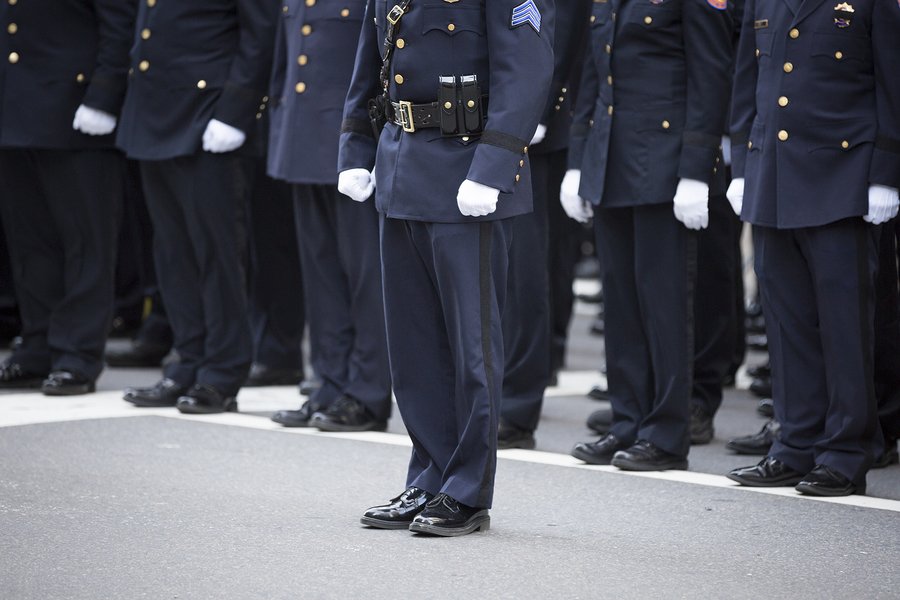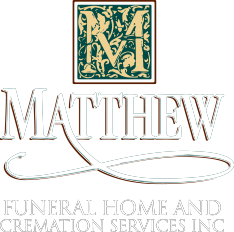Wearing a Uniform to a Funeral
In many organizations and service professions, it is customary to wear your uniform to the funeral of a member or the loved one of a member. Wearing a uniform to a funeral shows comradery and support for your fellow member, or for their loved one.
Military
The men and women who have served in the military are often honored at their funeral with military service and presence. The military, in all branches, have customs that govern their etiquette at a funeral.
For the military, dress uniforms or service uniforms may be worn. Battle dress is not allowed. Your uniform should include all decorations, medals, badges, ribbons and insignia, although active personnel should defer to the commanding officer's directive. Retired servicemen and women may wear uniforms with the insignias and rank held at the time of retirement. Color guards and a 21 gun salute are often common
If you are wearing a hat, you should salute when the hearse passes you, and during the lowering of the casket into the ground. If you are not wearing a hat, place your hand over your heart; only during “Taps” and the gun salute.
Police
The funeral of a police officer is often honored with police presence. Whether or not they passed in the line of duty, it is common for other officers to attend, in uniform. When the officer dies in the line of duty, extensive funerals are often held, with the family’s wishes, of course.
Full military-style honors are made available to those heroes who fall in the line of duty, starting with a casket watch. The duty of those who have the high honor of casket watch is to stand vigil during the wake or viewing.
Uniforms may be altered for the funeral. The most common type of alteration is the shrouded badge; where a piece of black tape or cloth is placed across a badge horizontally. Each precinct, city, or state will have their own orders and plans for the honoring of officers. A color guard is often present.
Firefighters
Firefighters, have their own customs for funerals, often separate from the police. However, in the event that the firefighter died in the line of duty, they will be given full military-style honors.
In most cases, formalwear or the Class A uniform is proper. Badge shrouding is also common for the firefighters. Many firehouses will have their own traditions when they lose a member; such as tolling the firehouse bell.
The Boy Scouts of America
Scouting is deeply rooted in tradition. Many scout units will attend the funeral of a fellow scout, or a scout’s family member in their full Class A uniform, with long pants. If the scout is not wearing uniform, then they should be in formalwear. If the deceased was a member of the Order of the Arrow, then OA sashes may be worn. Medals and awards of training distinction, such as the Eagle Scout pin and the Wood Badge Beads may be worn on the uniform.
It is not customary or required for the BSA to provide a color guard or “Taps” during a funeral. If the family requests it, the unit should provide one if possible. There are no official “Scouting Funeral Services.”
Other Clubs or Groups
People across the nation, and the world, are part of volunteer and service clubs; like the Kiwanis, Rotary International, the Elks, the Freemasons, et cetera. Each club or organization will have their own customs and rules regarding etiquette for a funeral. It may be as simple as wearing a pin on your lapel, or another distinction. It is important to check with the family before organizing members for a presence at the funeral. Speak with your chapter president, look into the chapter bylaws, or look at the organization’s national rules in regards to funerals; for more information.
For almost 50 years, Matthew Funeral Home has been serving the Staten Island community. We can help with almost every aspect of your loved one’s memorial service. Our family is here to serve yours, every step of the way.
 (718) 761-5544 |
(718) 761-5544 |  matthewfh@matthewfuneralhome.com |
matthewfh@matthewfuneralhome.com |  2508 Victory Boulevard, Staten Island, NY 10314
2508 Victory Boulevard, Staten Island, NY 10314








 matthewfh@matthewfuneralhome.com
matthewfh@matthewfuneralhome.com
Comments